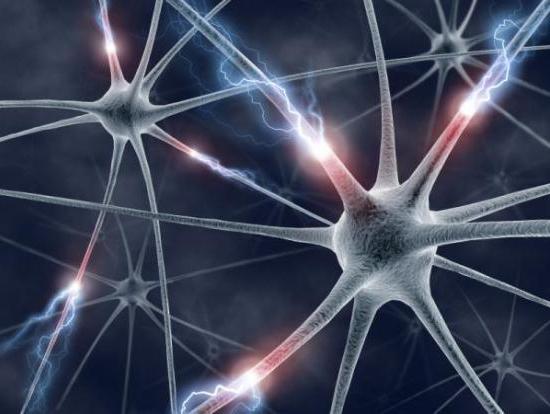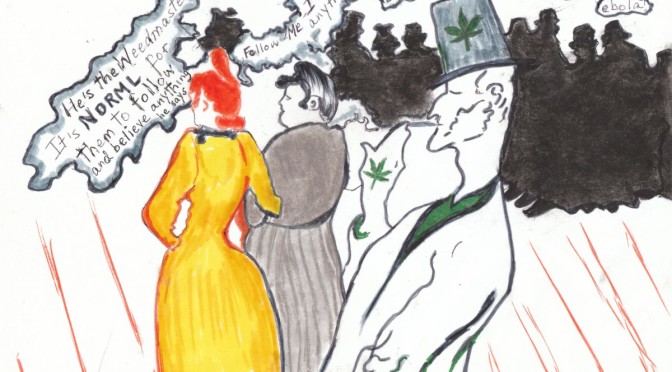Medical marijuana tries to bypass discussion of the mental health risks. Marijuana is linked to long-term psychiatric problems such as schizophrenia, anxiety and psychosis. There is mounting research to suggest that youth usage of marijuana greatly increases the chance for both depression and suicide, as recently reported in the The Lancet Psychiatry Journal.
The PTSD Marketing Strategy
It was a good publicity stunt, but a cruel trick. The marijuana industry recently staged an event in Denver to attract veterans. They gave out free marijuana for Post Traumatic Stress Disorder (PTSD). PTSD is very real, and it’s a condition to be taken seriously.
The medical community should find solutions that would bring veterans back to their previous state of functioning before combat. Louis Zamperini, the hero of a book by Laura Hillenbrand and movie directed by Angelina Jolie, Unbroken, had severe PTSD from World War II. He had been beaten in a Japanese prison camp and lost at sea 46 days on a raft. It’s unlikely he would have healed and charged forward so well if marijuana had been offered as the solution. The movie will be in theaters on December 25.
Marijuana numbs certain emotions. It also effects memory. PTSD symptoms are different for different people, but it can include numbness, too. If fear, numbness and depression are present with PTSD, there should be a means that re-build connection to everyday life, rather than avoid the reality of life. Dogs and Yoga are amongst the best treatments for rebuilding connection. Time is a great healer, too.
Handing out free so-called “marijuana medicine” makes a mockery of recovery. It’s hoped our veterans could get back to work and not face long-term disability. Keeping “patients” addicted and under the thumb of medical marijuana industry may do the opposite. The best book on the subject, Judith Lewis Herman’s Trauma and Recovery, doesn’t suggest masking memory. Our first choice should always be therapies that go to the root of the problem, rather than masking the symptoms. Medical marijuana has the potential for masking symptoms. It also risks making a person apathetic and numb. It could give the illusion of getting better without deep healing.
Why does marijuana cause dependency? As explained in a testimony, marijuana usage interferes with the natural processes and messes with brain chemistry. After stopping marijuana use, irritability, anxiety, depression, nervousness, restlessness, insomnia and and suicide can be part of marijuana withdrawal. As time can heal marijuana withdrawal symptoms, time can heal PTSD. If we want veterans to not be permanently disabled, Congress should not allow marijuana for veterans suffering from PTSD.
A Cruel Attempt to Treat Psychiatric Disorders
Marijuana may increase the burden of mental illness. It is well-known in medical circles that marijuana makes the course of mental illness worse and successful treatment less likely. In fact, marijuana is the most common illicit drug to trigger a psychiatric disorder. For this reason, extreme caution should be taken before recommending marijuana to anyone, for any reason.
There’s strong evidence that mental illness is increasing in America. According to Robert Whitaker, author of Mad in America and Anatomy of an Epidemic, an increase in bi-polar disorder is driven in part by the expansion of diagnostic boundaries, but it is also being fueled by the widespread use of illicit drugs.
Whitaker explains that studies of first episode bipolar patients, roughly 1/3 suffered their first bout of mania or mood instability after they had abused illicit drugs — amphetamines, cocaine, marijuana and hallucinogens. Marijuana, as the most widespread of the illicit drugs, poses the most risk. (See 10 Marijuana Myths Advocates want you to Believe)
A culture of medication teaches our children to look for easy solutions; it may be influencing the widespread desire to self-medicate with marijuana and other drugs. Psychiatric medications are over-prescribed — anti-depressants, as well as anti-psychotics and ADHD medications. Whitaker also believes that the use of psychiatric stimulants and anti-depressants increases the risk of getting the bipolar diagnosis.

Leafly, a cannabis company in Seattle run Privateer Holdings, solicits users by advertising 88 strains of marijuana to cure bipolar disorder, depression, anxiety and ADHD. This type of advertising should be censored due to the lack of evidence and high risk for psychosis that comes with marijuana. Any psychiatric treatment demands strict oversight by a qualified medical practitioner, and is often done on a test basis. Medical marijuana “providers” often don’t have to meet standards or qualifications, other than being at least 21 years old.
Prevention over Substituting Addictions
Those who disagree with medical marijuana do not necessarily advocate for the alcohol or pharmaceutical industry.
Some of us notice that people who become addicted to any drug usually began their drug usage with marijuana, which is another reason we wish to prevent youth from using it at all costs. In fact, when it comes to teens and young adults, addicts almost always begin their drug usage as a marijuana user. The marijuana industry gives lip service to wanting to keep it from those under age 21, while using the social media and other tactics try to get young people to support them.
Opiate Addiction Solved by Marijuana ????
Recently an article suggested that marijuana can be a tool to beating opiate addiction, because of a study which opined that states with medical marijuana have fewer opiate overdose deaths. The study shouldn’t be interpreted as proof that medical marijuana brought a drop in opiate use or death.
States with the highest marijuana usage, including use by ages 12-17, tend to also have the highest opiate pill, cocaine and heroin usage. Oregon, Colorado and Vermont will need to limit youth marijuana usage, if they truly want to bring down other problems. To a certain extent the current heroin problem has arisen because people addicted to the opiate pills have been unable to get the pills.
The logical way to avoid death by opiate overdose is to keep it in the hands of only those who need it, teach responsible use, and avoid over-prescribing. Not everyone who uses opiate pills needs to get addicted. Many people use vicodin, percocet and oxycontin only for the limited duration until the pain is gone. Twisted, illogical thinking is suggesting that we must substitute one addiction with a drug that can also work on the mind and cause psychosis.
If we are to solve the problem of addiction in a lasting way, we need to help children and teens not begin to use. We emphasize proper usage, not substituting one addiction for another, or “lilypadding” from drug to drug. Prevention before abuse starts has the BEST chance of success.

